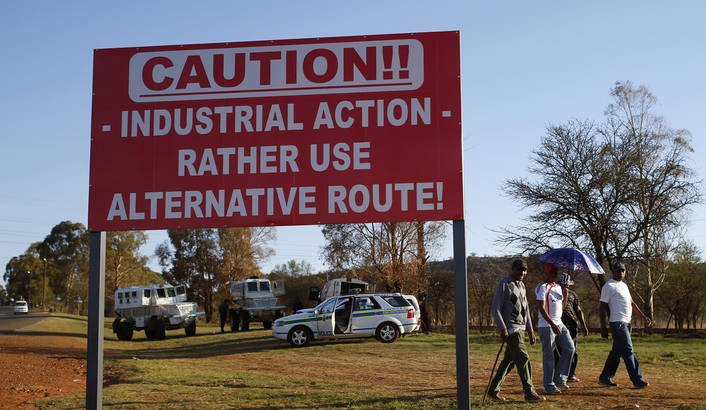 WITHIN
a two-block radius on Manhattan’s Upper West Side, three pedestrians
have lost their lives in separate traffic accidents since Jan. 1.
Nineteen more have been killed elsewhere in the city since the beginning
of the year. Those 22 are just the latest in the city’s epidemic of
traffic fatalities. Last year 176 pedestrians were killed by cars and
trucks in the city, according to police data, the most since 2008.
WITHIN
a two-block radius on Manhattan’s Upper West Side, three pedestrians
have lost their lives in separate traffic accidents since Jan. 1.
Nineteen more have been killed elsewhere in the city since the beginning
of the year. Those 22 are just the latest in the city’s epidemic of
traffic fatalities. Last year 176 pedestrians were killed by cars and
trucks in the city, according to police data, the most since 2008.
Recently, Mayor Bill de Blasio announced a new campaign against traffic fatalities, called Vision Zero,
including more ticketing, lower speed limits and redesigning
intersections. Meanwhile, the police have cracked down on jaywalkers and
put up signs and barriers encouraging people to cross with the light,
and the department is investing in equipment like laser speed guns and
speed and red light cameras. These are all good ideas. But the problem
isn’t just inadequate policing, distracted pedestrians or reckless
motorists. It’s that the design of our streets does not match the way
they are being used.
In
urban planning circles, city streets are generally considered to be
among the safest kind of roadways. They tend to have narrower lanes, a
lot of right angles and a lot of general hustle and bustle — “social
friction,” as transportation planners call it. There are trees, parked
cars and other “fixed objects,” all things drivers need to navigate
around with more precision than, say, a wide open country road.
New York City is full of such streets. So why are pedestrian fatalities increasing?
Consider
where the majority of the pedestrian fatalities are happening. Last
year, Queens was the deadliest borough for pedestrians, with many of the
deaths happening on wide, fast-moving arteries like Northern Boulevard,
the Cross Island Parkway and Queens Boulevard.
The
Bronx, also home to many of these thoroughfares, had the biggest
increase last year, more than double the number in 2012. The fatalities
have also occurred on scenic but fast-moving roadways like Prospect Park
West in Brooklyn or West End Avenue in Manhattan.
These
streets are not intimate village blocks; they are major corridors that
more closely resemble arterial roads, those fast-moving stretches of
four- to eight-lane thoroughfares that connect one suburban town to
another, on which cars travel up to 60 miles an hour.
Such
roads are famously dangerous for pedestrians. Eric Dumbaugh, the
director of the School of Urban and Regional Planning at Florida
Atlantic University, has found that every additional mile of arterial
road increases traffic fatalities by as much as 15 percent.
But
New York City’s fast-moving roadways are different from suburban
arterial roads in one big way: The cars share them with millions of
pedestrians. We have roadways designed around the car, in a city teeming
with ever more people on foot.
Any
comprehensive approach to traffic fatalities has to take aim at
redesigning these roads. Queens Boulevard, for example, isn’t a city
street; it is a highway masquerading as one. We should either call it a
highway, and build medians, barriers or even pedestrian bridges, or
treat it like a city street and make the lanes narrower, add more
stoplights and crosswalks, and install obstacles and other elements of
“social friction.” (Another tool: trees with branches that extend over
the street creating a canopy that, like social friction, acts as a
naturally occurring slowing device.)
Transportation
planners talk about the benefits of “street diets,” efforts to slim
down car lanes and add elements like bike lanes, planters or pedestrian
plazas with tables and chairs. Just look at the groundbreaking work of
Janette Sadik-Khan, the former New York City transportation commissioner
who re-engineered many of the city’s most sprawling intersections as
public plazas, most famously turning the stretch of Broadway in Times
Square into 2.5 acres of new pedestrian space. Injuries dropped by 40
percent in the wake of the changes.
These
things don’t have to cost a lot of money: Ms. Sadik-Khan initially
transformed Times Square with paint and lawn chairs. Besides, it seems
like a natural opportunity for a big corporate donor to own a cause
that’s just as noble as bike sharing, and will save lives.
It
is wrong to place all the blame on drivers for going fast on roads that
are designed for them to do just that, and it’s unfair to blame
pedestrians for not being careful enough when they are behaving exactly
as smart, sensible pedestrians behave. The problem is how we are mixing
the two together.
All
the pedestrian warnings in the world won’t matter if we’re encouraging
foot traffic where motorists are hitting highway speeds. It’s like
removing all the guardrails at the top of the Empire State Building and
expecting people to use common sense not to fall off.
Traffic
fatalities are not like some of our most vexing public health issues
with no obvious solution or cure, like autism or cancer. There is a
clear and proven way to fix the problem. Why not go for the easy win
that’s also the right thing to do? The path forward is obvious — and
narrower, safer and better landscaped.


 High-intensity interval training, a type of workout that consists of
High-intensity interval training, a type of workout that consists of 




 RUTLAND,
Vt. — Block by block, this city in central Vermont has been fighting a
heroin epidemic so entrenched that it has confounded all efforts to
combat it.
RUTLAND,
Vt. — Block by block, this city in central Vermont has been fighting a
heroin epidemic so entrenched that it has confounded all efforts to
combat it.











